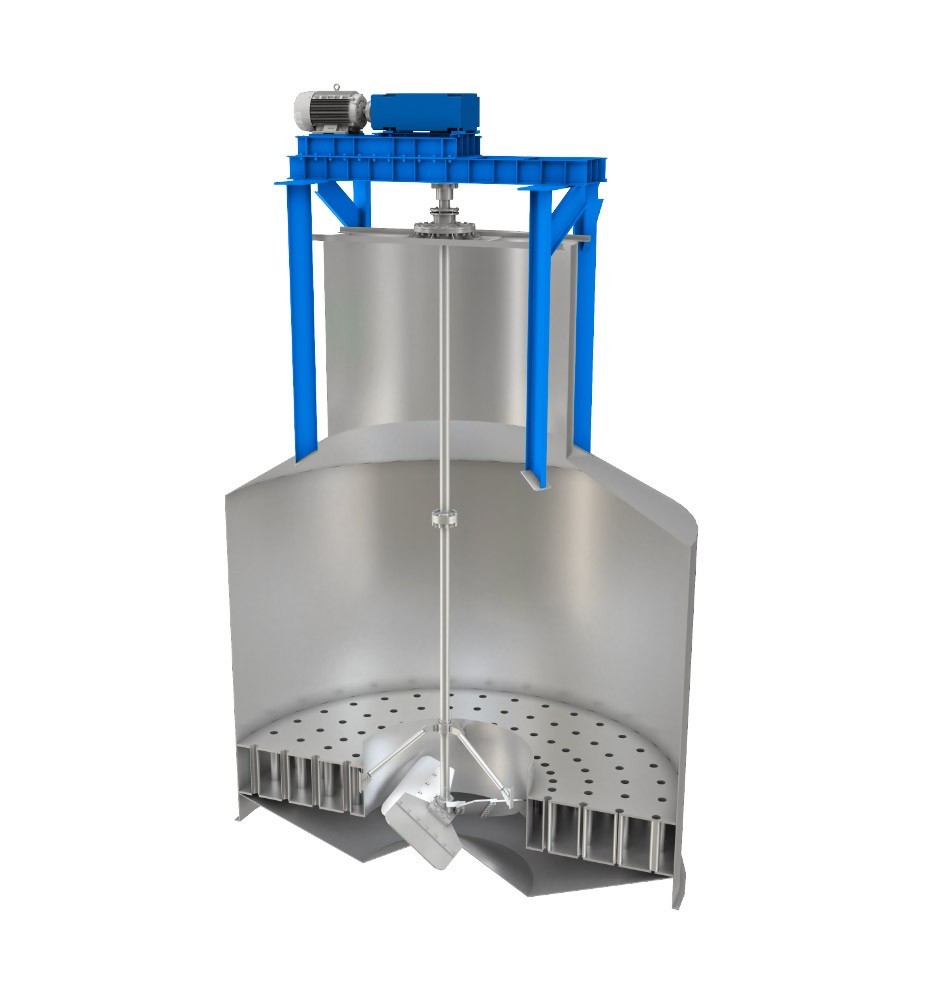Mechanical Pan Circulators
Mixion - Mixing Technology


MECHANICAL PAN CIRCULATORS
Mechanical Pan Circulators are used in the Sugar industry to enhance the efficiency of the crystallization process. They can be used for A, B and C massecuites. Mechanical Circulator for vacuum pans reduces boiling time, sugar color and increases pan yield. It boosts the heat transfer efficiency by inducing a higher rate of heat transfer and evaporation. With an increase in heat transfer coefficient, the strike time reduces up to 30%, which in turn increases the production capacity of the unit.
Material of Construction: Carbon Steel | Stainless Steel
Applications: Sugar
| Motor Rating (kW) | Shaft Diameter (mm) | Operating Pressure | Operating PressureShaft Length |
|---|---|---|---|
| 18.5 - 90 | 90 - 145 | Vacuum | Upto 10m |
Advantages include less color in the sugar, reduced risk of sugar losses by local overheating with low risk of smelting of crystals, and reduction in centrifuge wash water consumption. With Mechanical Pan Circulators, there is a possibility of feeding the pan with syrup and molasses, the opportunity to utilize lower steam pressure for heating, and the possibility to use lower pressure vapors resulting in the reduction of steam consumption.
Our designs provide uniform and consistent crystal formation, avoid loss of head, and less deposition on the tubes due to abrasion of circulating crystals.
Working Principle:
The construction of a Mechanical Pan Circulator consists of a motor driving the gearbox which offers the required speed reduction to the connected shaft and impellers. A sealing arrangement is provided between the circulator and the pan to maintain the vacuum. This seal may be of the packed gland type. A variable-speed direct torque control drive (VFD) is used to drive the motor. The drive is programmed to run at the fastest speed possible while keeping within the motor’s allowable power and torque capabilities. As the massecuite viscosity increases, the drive senses the increase in required torque and slows down the motor to prevent any component from being overloaded. If the massecuite viscosity increases to a point where the drive is running at the lowest speed allowable, for motor cooling, then the drive trips.
Key Design Features:
- Process design basis adopted over the conventional thumb rule approach of pan tonnage-based motor rating selection
- Saving in time up to 30% for the strike
- The maximum temperature reached by the massecuite is substantially lower
- Rugged heavy-duty design
- Mechanical arrangement to ease maintenance activity
- Options of gearbox types – planetary, inline helical, bevel helical arrangements



